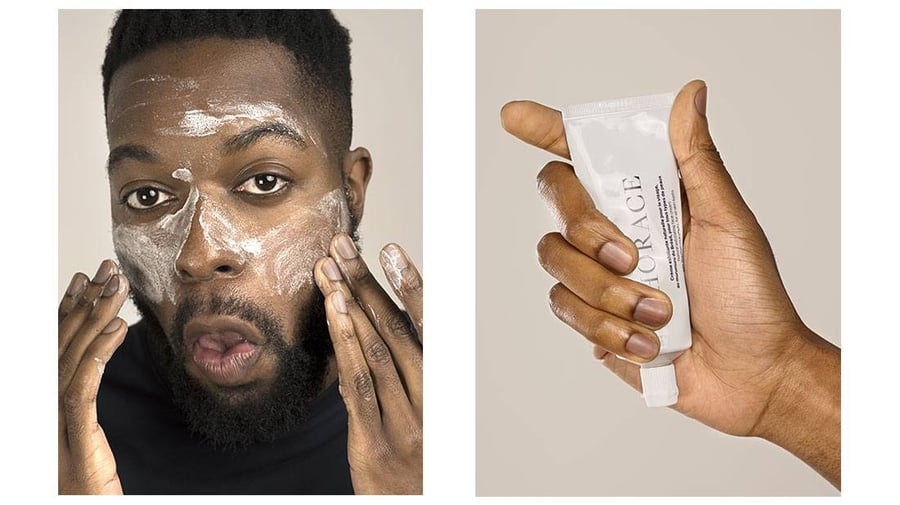
Facial scrubs and exfoliating: everything you need to know
Photos Louis Canadas
Words
Share the article on
You asked us questions, and we’re giving you answers.
Cleanse, hydrate, exfoliate: the three obvious steps for a healthy complexion. Out of these three steps, exfoliation is the one you’ve asked us the most questions about via email, in our chat and on our socials. So it’s time to get to an answer!
“What are exfoliants good for?”
To put it simply, it works to cleanse the skin more deeply. Exfoliants are used in addition to a cleanser to unclog pores, eliminate dead skin, and renew your skin. It rids your face of excess sebum and generally gives you a brighter and fresher look. Bonus: it also helps prevent ingrown hairs when used before shaving, helping the little hairs to come out before the blade passes.
“When should you use an exfoliant?”
You don't have to (and shouldn’t) use it every day. Once a week is enough, or twice if your skin is oilier. You can use it in the shower, replacing your facial cleanser.
“How do you use a gommage (aka a face scrub)?”
Because a picture is worth a thousand words, we made a video to explain the technique to you! Here it is:
"How does it work?"
There are several kinds of exfoliants. First, there are mechanical exfoliants: these are made of exfoliating particles (crushed fruit shells, etc.) which, on contact with the skin, exfoliate. For example, our exfoliant with murumuru shells is a mechanical exfoliant, since the grains come from a crushed Brazilian almond.
Then there are chemical exfoliants: these include acids like glycolic acid sourced from beets, or AHAs from papaya for example. When it comes in contact with the skin, these acids will eliminate dead skin cells. So there’s no need to scrub! It’s especially beneficial for sensitive skin.
“Can all skin types exfoliate?”
Definitely! Dry, normal, sensitive, and oily skin can all benefit from the improved appearance, the instant glow, cell renewal, and even the renewed softness of the skin right after exfoliation.
But it’s important to know your skin type to be sure to use the right product. For example, an exfoliating sponge is particularly suitable for sensitive skin because it’s softer than a classic exfoliant. It’s recommended, for example, for people with rosacea or eczema. Drier skin on the other hand, should be exfoliated with a product containing a moisturising active ingredient, such as our murumuru butter exfoliant. Oilier skin can be exfoliated with a stronger product. There’s something for everyone!
“Why do you need to moisturise after exfoliating?”
Applying a moisturiser after exfoliating helps keep your skin protected, which is especially useful when you've just deeply cleansed. Also, hydrating it will keep it soft. And having soft skin is a very pleasant feeling.
"Do you have to exfoliate your face all year round?"
Exfoliating is good for your complexion all year round. When it's cold, it's even more useful. In cold weather, your skin has less lipid protection so it risks drying out. Normal skin then tends to dehydrate, while dry skin becomes more irritable. One thing is certain, all skin types will produce more dead skin. This is where exfoliating becomes indispensable.
Plus, when it's cold, cell renewal tends to be slowed down: exfoliation helps you restart the process for skin and a complexion that remains as flawless as it is on sunny days. Don’t be surprised is someone asks if you just got back from vacation.
Do you have any other questions about exfoliation? Leave them in the comments. We’ll answer them all!